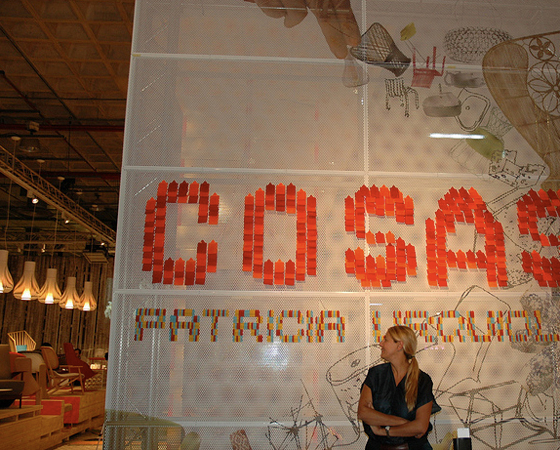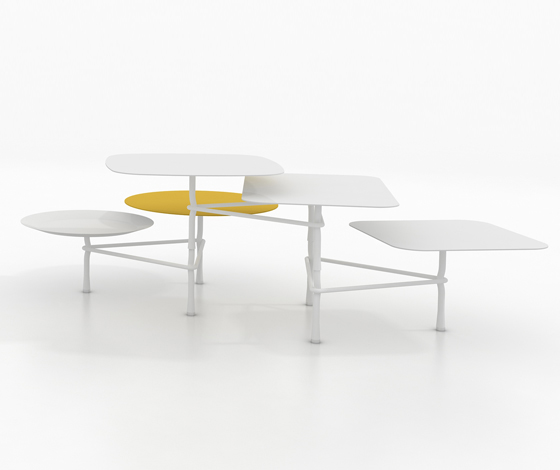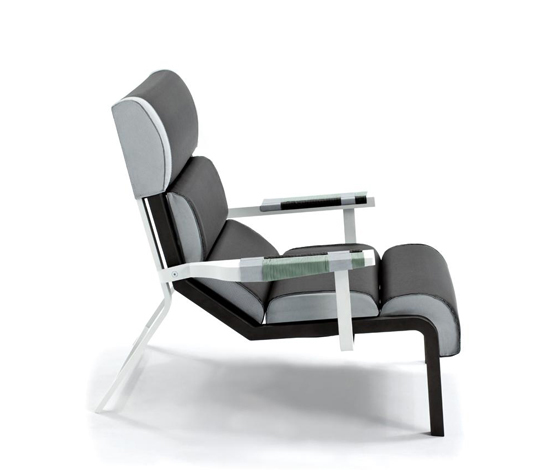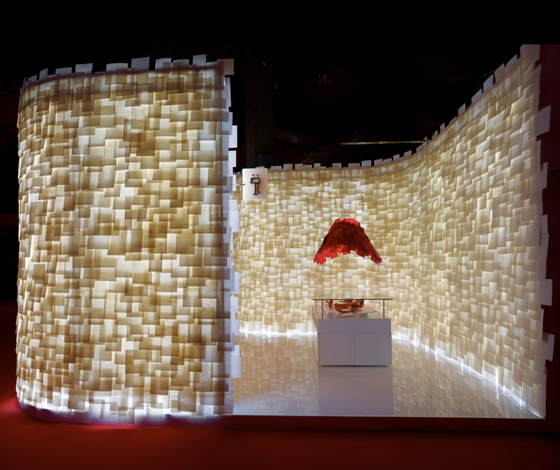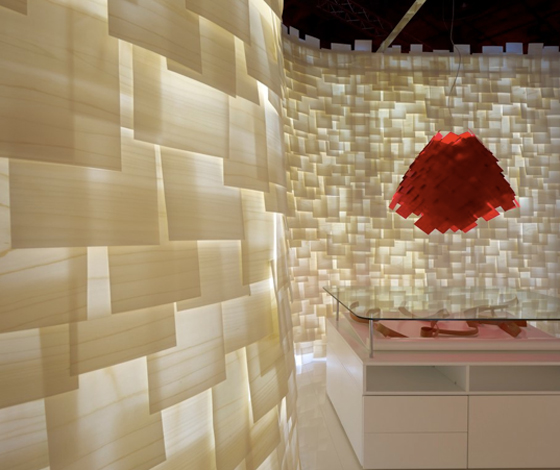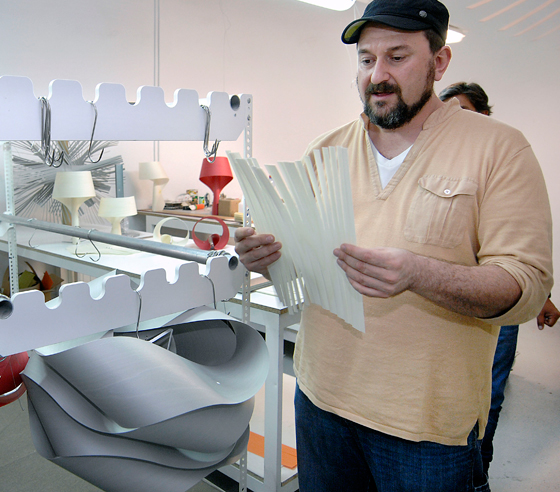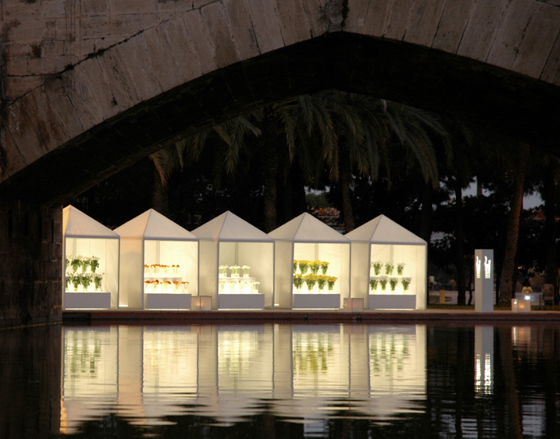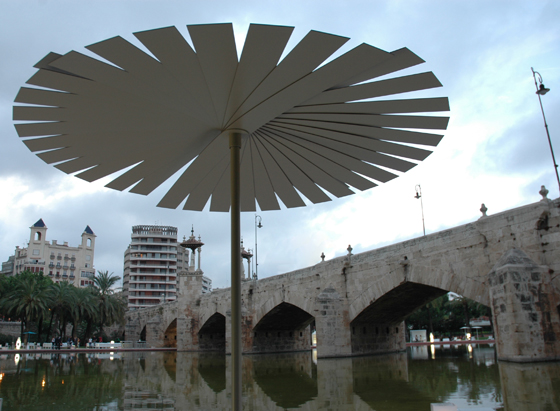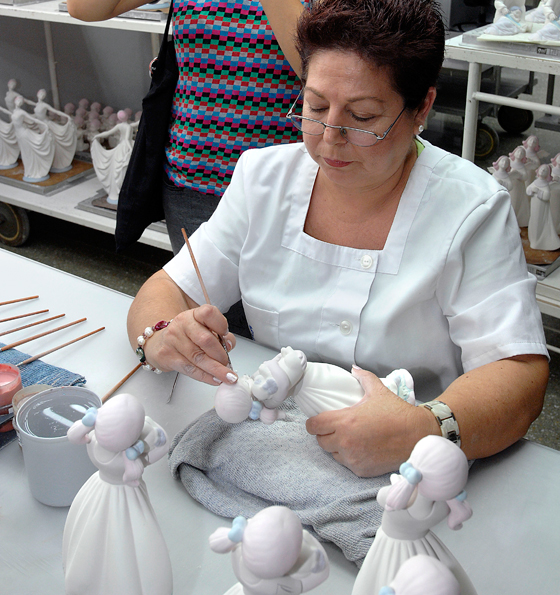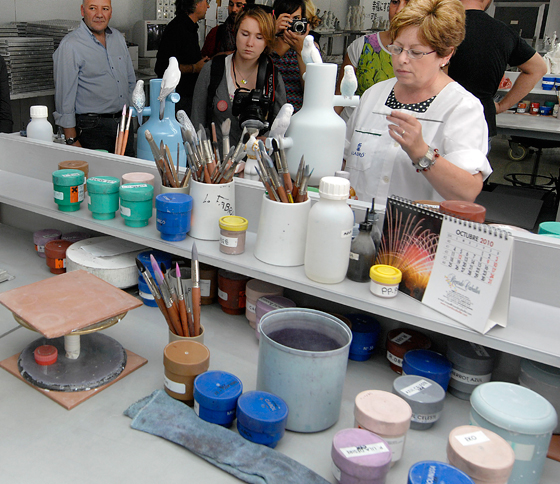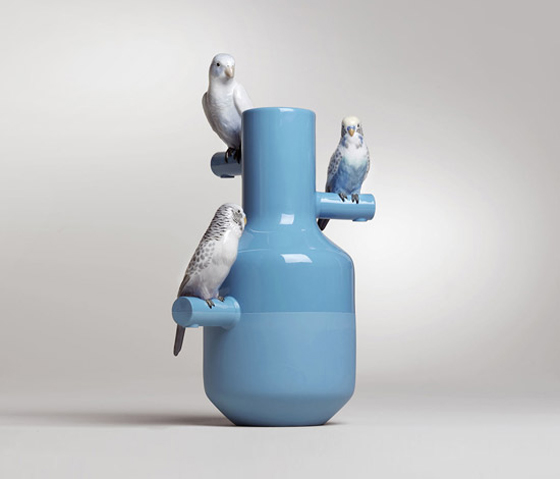Valencia Disseny Week
Texto por Nora Schmidt
Berlin, Alemania
04.11.10
Thanks to an invitation to FEED, the first congress of international bloggers and digital media, received from Valencia Disseny Week and ADCV, the association of Valencia designers, Architonic had the opportunity not only to attend Habitat Valencia but to gain valuable insights into the production facilities of a number of Spanish manufacturers.
Patricia Urquiola presented her work from recent years in a special exhibition dedicated to her
In spite of the financial crisis, which has hit the Iberian peninsula with especial severity, the mainly Spanish exhibitors at this year's Habitat Valencia seem to be looking to the future with some optimism – in particular those which supply not only Spanish but also international customers and do not regard the difficult economic situation as a threat to their existence.
Trade visitors, too, ignored the pessimistic messages from the economists and appeared in large numbers at Spain's main furniture fair – some exhibitors report that there was a considerable growth in visitors from such emerging countries as India and Brazil. This is without a doubt partly due to the initiatives launched by the ambitious organisers, who provided a wide and diverse accompanying program in the form of special exhibitions and congresses.
For example, this year saw the first Iberian/American congress of interior architects with the aim of providing a platform for a dialogue and forward-looking networking among European and Latin American architects and designers. As a bridge between the continents Spain is very much the ideal place for this.
Patricia Urquiola was prominent not just as a guest speaker at this event but also as the designer of this year's special exhibition. In Hall 6, the exhibition area which is especially dedicated to manufacturers in the premium segment, she staged an overview of her work of recent years with her usual charm and feeling for surfaces, patterns and textiles. In the new modular coffee table 'Tears' the designer, who lives in Milan, also presented a new design which has been created on the half of the Spanish manufacturer Viccarbe.
With two different bases and four different table tops 'Tears' can be put together in a number of ways
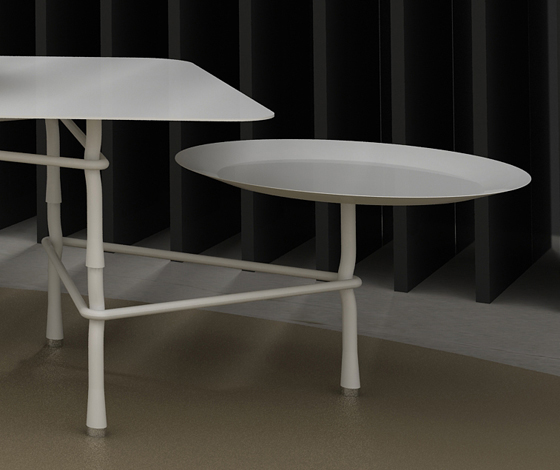
With two different bases and four different table tops 'Tears' can be put together in a number of ways
×Ketall used Habitat Valencia as an occasion for the launch of the 'Bob' armchair designed by Hella Jongerius. This interpretation of the classical club chair for outside use catches the eye in particular thanks to a clever detail, the division of the metal frame into two sections, which gives the armchair a certain lightness, in spite of its width. The seat and backrest are positioned against a wide black frame which also forms the front legs of the armchair, which is supported by a much narrower white frame forming the armrests and rear legs.
Nanimarquina presented the new products which it had already shown in Milan. In addition to the Nanimarquina stand itself many visitors were fascinated by a video about the production process for Nanimarquina carpets in India. In this context it should be mentioned that Nanimarquina is a member of the Care & Fair Association and can accordingly guarantee that none of its products is the result of child labour.
The 'Boomerang' chair by the Spanish manufacturer Sancal was presented for the first time at Habitat Valencia. Its outline is an indication of where the chair gets its name: the solid wood frame is made up of two boomerang-shaped elements which form not just the arm rests but also the front and rear legs.
:'Boomerang' chair by Quim Larrea & Associates for Sancal
This year's Luzifer stand consisted of a fascinating installation which perfectly displayed the characteristic material of the Spanish lighting producer. Squares of 'polywood', a composite material patented by Luzifer and made of veneer and polyester, were fitted to two staggered walls of light. The homogeneous background lighting emphasised the translucence of the material and at the same time the design principle behind the new 'Armadillo' lamp.
This year's stand of the Spanish lamp manufacturer Luzifer; 'Armadillo' pendant lamp
'Polywood' is the patented material al Luzifer lamps are made of
In the course of the FEED conference Sandro Tothill, co-founder and managing director of Luzifer, invited us to take a tour of Luzifer's production facilities in a former wine producing plant outside of Valencia. This was followed by an excellent paella banquet in the garden of the plant. The photos provide an impression of the Luzifer production process.
Sandro Tothill at the Luzifer factory, photo by courtesy of ADCV & Héctor Rubio 2010
A real highlight outside of the trade fair site was this year provided by Gandia Blasco. In the park around the dried-up river bed of the Turia, which since its completion in the 1990s surrounds the old town of Valencia like a belt of green, the Spanish producer of outdoor furniture had arranged a very special exhibition. Below the historic bridge and around a pond the latest Gandia Blasco products were displayed in an atmospheric candle-lit setting and accompanied by cool drinks – exactly the right way to end a strenuous day at the fair.
The Gandia Blasco installation in the dried-up river bed
'Kilim' is one of the new carpets GAN by Gandia Blasco presented at this year's Habitat Valencia
The next item on the programme for the FEED participants was the production facilities of the porcelain manufacturer Lladro. This family-run company, which was founded in the 1950s, produces hand-made porcelain figures, furnishing accessories and lamps. Under the artistic management of Jaime Hayon and with modern collections the company has been able to distance itself from the old-fashioned display-case kitsch of its competitors. With his 'Fantasy Collection' the Spanish designer has created a bridge between traditional porcelain craftsmanship and the modern design idiom and decor, thus creating new respect for Lladro among fans of good design.
Visit at the Lladro factory, photo with courtesy of ADCV & Héctor Rubio 2010
Lladro factory, photo with courtesy of ADCV & Héctor Rubio 2010
The days in Valencia are never boring and much too short – there's so much to see and so many things one still hasn't managed to see yet. But even in Spain the day is only 24 hours long – even if these are 24 very special hours.
